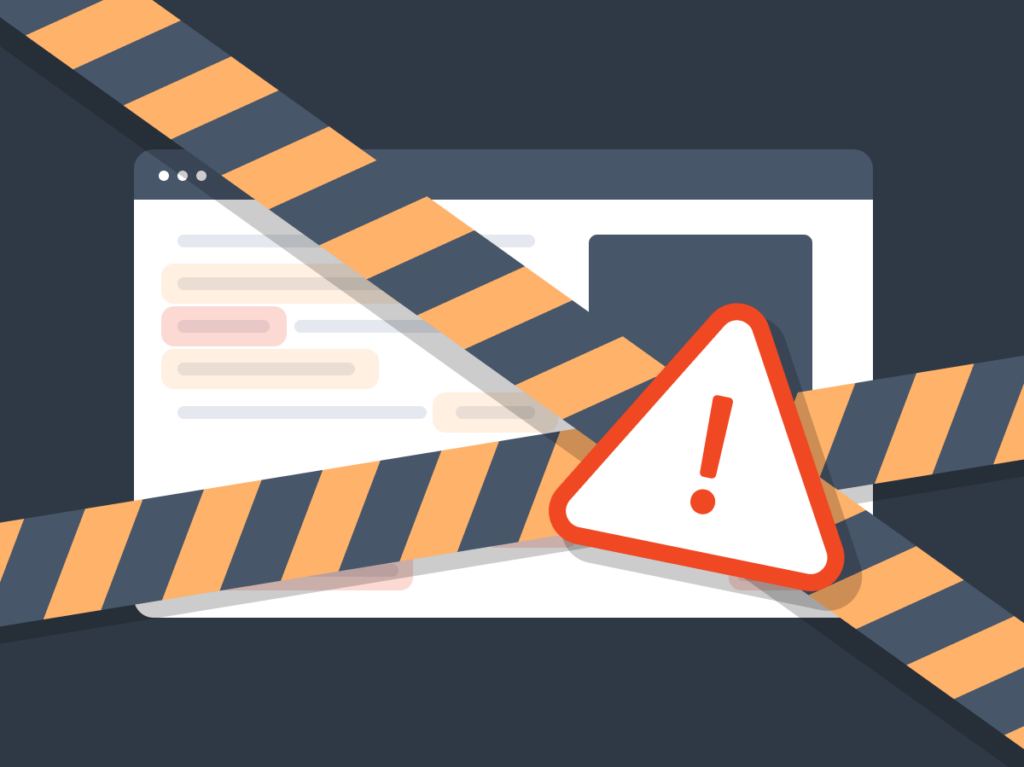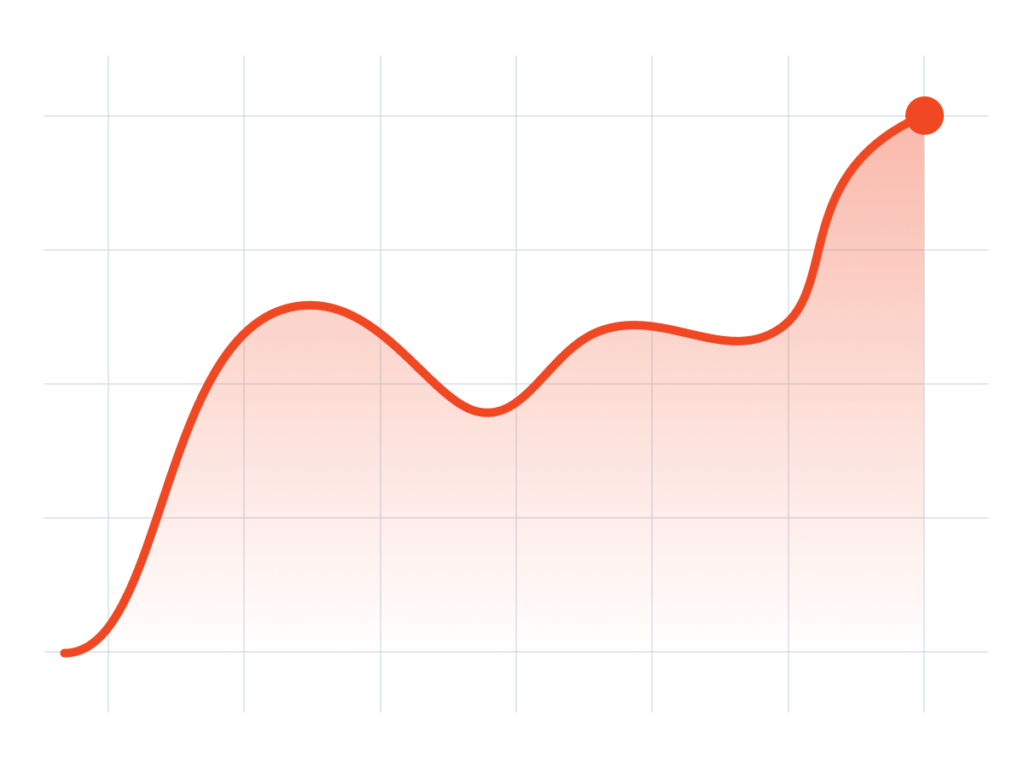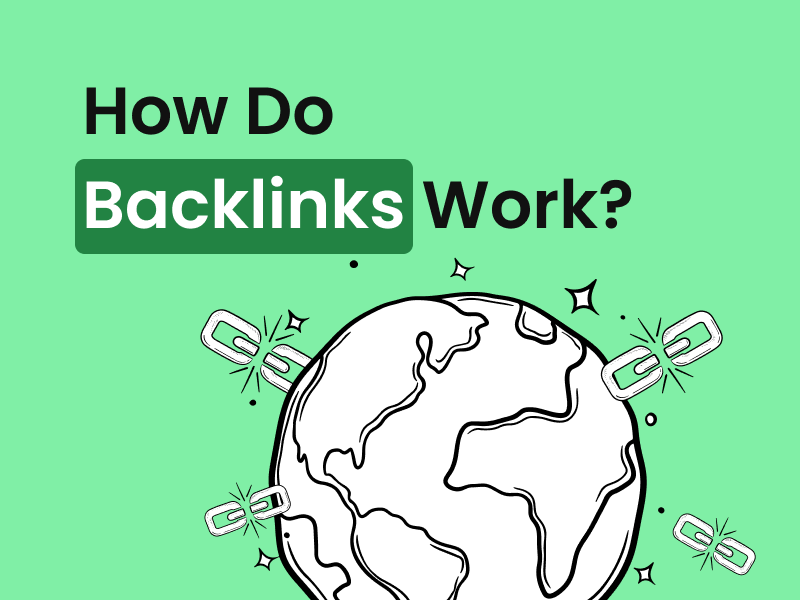Maximising SEO: How Many Good Backlinks Do You Need to Rank Your Website Effectively?

By Gareth Henry | Last Updated 19 February 2024
Introduction to the Power of Backlinks
Understanding the Impact of Backlinks on Google SEO
Backlinks are the secret sauce in the SEO recipe! They’re crucial because they signal to search engines, like Google, that other websites vouch for your content. If many sites link to the same web page, search engines infer that the content is worth linking to, and therefore also worth surfacing on the SERPs (search engine results page). Imagine backlinks as ‘votes’ for your webpage’s credibility and relevance.

Deciphering Quality vs. Quantity in the Link Building Domain
The age-old debate in SEO circles is whether to chase after the quantity of backlinks or to prioritise the quality. The misconception lies in the numbers game; more is not always better. High-quality backlinks from reputable, relevant sources have far more weight than a plethora of poor-quality links. Remember, a gem shines brighter amongst stones!

The Essence of High-Quality Backlinks
Defining What Makes a Backlink High-Quality
What makes a backlink high-quality can seem mysterious, but it’s really quite simple. A high-quality backlink typically comes from an authoritative site — think big names or industry leaders. It’s not just about who, though; relevance matters too, with links from related niches packing more punch. And let’s not forget the anchor text! Ideally, it should be natural and relevant to your content, making your site appear like a strong contender for the linked niche keyword.
Benefits of High-Quality Backlinks:
- Enhanced domain authority
- Improved search engine rankings
- Increased referral traffic
- Better user trust and credibility
- Long-term SEO value
Ideal Sources for High-Quality Backlinks:
- Industry publications or news media sites.
- Academic or research institutions.
- Professional organisations within your niche.
- Renowned content creators or influencers.
- Trusted directories and forums related to your field.

Why Quality Links Trumps Quantity Every Time
When it comes to backlinks, the adage “less is more” rings true. Quality trumps quantity because search engines are increasingly sophisticated, favouring backlinks that demonstrate true authority and trustworthiness. This focus means that a handful of well-placed, authoritative links can do more for your rankings than a swarm of lesser ones. Moreover, quality backlinks last longer and provide sustainable SEO benefits, making them a far more valuable long-term investment for your website’s growth.
The Risks of Low-Quality Backlinks:
- Potential for Google penalties or manual actions
- Deterioration of your site’s reputation
- Loss of ranking positions due to poor trust signals
The Reality:
- Quality backlinks help build a robust link profile that withstands algorithm updates.
- They ensure that your site is associated with reputable and relevant sources, boosting your credibility.
Remember: It’s better to be a big fish in a small pond than a small fish in a vast ocean of links.

Gauge Your Website’s Backlink Needs
Analysing Your Current Backlink Profile
Understanding where you stand can guide you better towards where you need to go. Analysing your current backlink profile helps you identify the strengths and weaknesses in your link-building strategy. Utilise tools like Moz’s Link Explorer to get a clear view of who’s linking to you, the quality of these links, and the variety of sources. Focus on unique domains that link to you, as search engines value diverse sources rather than multiple links from the same domain.
Key Elements to Assess:
- Total number of unique domains linking to your site.
- The authority of linking domains.
- Relevancy of the link source to your content or industry.
- Anchor text distribution to ensure a natural profile.
Caution: Keep an eye out for spammy or irrelevant backlinks that could harm your rankings. They could be a sign to clean up your backlink profile.

Setting Realistic Goals for Backlink Acquisition
Goals keep you on track, and in the world of SEO, they need to be as realistic as they are ambitious. To set attainable backlink goals, start by reviewing your industry’s landscape. How do your competitors fare in terms of their backlink profiles? Then, consider your website’s current performance and the effort needed to close the gap with the leaders in your space. Rather than setting arbitrary numbers, target specific, relevant sites for link acquisition to create a more meaningful impact.
Steps to Setting Backlink Goals:
- Conduct a competitive analysis of backlink profiles.
- Assess the quality and relevance of your current backlinks.
- Identify potential high-quality sites for future backlinks.
- Determine a scalable approach based on your resources.
- Set periodic check-ins to measure progress and adapt strategies.

Smart Strategies to Build Quality Backlinks
Guest Blogging with a Purpose
Dive into the world of guest blogging with a clear mission! It’s not just about spreading your name; it’s about strategic alliances and quality content that serves a dual purpose — value for the host site and visibility for you. Before starting your outreach strategy, ensure that the host site’s readership aligns with your target audience, and that it has a strong domain authority. Create articles that are meticulously researched and teeming with unique insights to solve common reader problems, and remember to weave in relevant backlinks to your own site naturally.
Strategies for Effective Guest Blogs:
- Identify reputable websites that reflect your target audience’s interests.
- Pitch topics that fill content gaps or bring new perspectives.
- Provide high-quality, original content that readers and search engines will love.
- Include a clear, compelling author bio that makes readers want to learn more about you.
- Follow the host site’s content guidelines to foster a successful partnership.
The Benefits of Purposeful Guest Blogging:
- Drives targeted traffic to your site.
- Builds professional relationships within your industry.
- Enhances your online authority, expertise, and brand recognition.
- Encourages valuable, organic backlinks to your website.
Recommendation: Tailor each guest blog post to the host site’s style and audience for maximum engagement and backlink value.

Skyscraper Technique for Content Keyword Excellence
Elevate your content strategy with the Skyscraper Technique by creating something even more spectacular than the existing highest-ranking pieces in your niche. This SEO process means scouting out the top-performing content and then outdoing it by making your version more thorough, up to date, and visually appealing. Not only does this attract attention from readers, but it also garners backlinks as other sites want to reference the best available resource.
Five Steps to Execute the Skyscraper Technique:
- Research top-ranking content for your target keyword phrases in your SEO niche.
- Analyse what makes these pieces successful and where they might lack depth or updated information.
- Create a more comprehensive guide, including additional insights, fresher statistics, and engaging media.
- Promote your content through social media, email outreach, and by directly contacting websites that have linked to the original pieces.
- Keep the content alive by regularly updating it to maintain its authority and relevance.
Why It Works:
- Presents you as a thought leader in your field.
- Encourages organic sharing and backlinks due to the content’s value.
- Improves user engagement and time spent on your site.
- Increases the chances of ranking higher than your competitors for target keywords.
Keep in Mind: Quality is key — ensure that every piece of content you build is well-researched and impeccably written.

If you don’t have the time to build your backlinks organically, our partners over at DesignRush have written an informative article about buying backlinks for SEO that you might want to check out.
Navigating the Risks and Rewards
The Dangers of Over-Optimisation
In the race to the SEO top, the pitfall of over-optimisation looms large. It’s a counterintuitive twist; trying too hard or going too fast with SEO — especially when it comes to backlinks — can flag your site as suspicious to search engines. Over-optimisation like stuffing keywords, acquiring too many backlinks too quickly, or using overly matchy anchor text can lead to penalties. These can cause drops in ranking or worse, getting de-indexed.
Common Over-Optimisation Flags:
- An unnatural influx of backlinks in a short period.
- Overuse of exact-match anchor text.
- Links from irrelevant or low-quality sources.
- A high ratio of backlinks to non-linked text or links over content.
Smart Prevention Tips:
- Develop backlinks at a natural pace.
- Vary your backlink anchor text.
- Focus on relevancy and quality over sheer numbers.
- Regularly audit your backlink profile for any red flags.
Avoiding over-optimisation is about maintaining a healthy, natural-looking backlink profile that Google sees as user-focused rather than manipulated.

Slow and Steady Wins the SEO Race
SEO is not a sprint; it’s a marathon. Gradual and consistent efforts in building your backlink profile can yield better, more sustainable results than hurried, haphazard attempts. By pacing the growth of your backlinks, you mirror organic development, which search engines favour. Also, recognise that backlinks accrue value over time, so don’t fret if you don’t notice immediate jumps in your rankings. Patience and persistence in strategic link building pay off in the long run.
Benefits of a Gradual Approach:
- Gives search engines time to naturally index new backlinks.
- Avoids triggering red flags for spammy behaviour.
- Allows for accurate tracking and analysis of backlink effectiveness.
- Helps establish a stable ranking that is less susceptible to fluctuations.
Keep in Mind:
- Implement a diversified backlink strategy to build resilience against algorithm changes.
- Regularly review your backlink profile’s growth and adjust your strategy as needed.
When in doubt, remember that quality backlinks are like fine wine—they only get better with time.

Tracking Your Progress Towards Higher Rankings
Checklist: Monitoring Backlink Health and Performance
Just like keeping tabs on your physical health, it’s vital to regularly check the well-being of your backlinks. This means periodically reviewing your backlink profile for any signals that could negatively impact your website’s SEO performance. SEO tools like Ahrefs and Semrush can alert you to lost or broken links, enabling you to take swift action. This is crucial because maintaining link health directly affects your site’s trustworthiness and rankings.
Key Monitoring Actions:
- Track new and lost backlinks.
- Identify and disavow toxic or spammy links.
- Analyse the anchor text for over-optimisation risks.
- Keep an eye on the link’s context to ensure relevance.
Advantages of Diligent Backlink Monitoring:
- Prevents potential penalties by identifying risky backlinks.
- Helps recover valuable backlinks that may be accidentally lost.
- Keeps you aware of your site’s evolving authority in your niche.
Stay proactive to support your site’s SEO vitality and ensure that your digital presence remains robust.

Adjusting Your Strategy Based on Results
Flexibility in your SEO technique and backlink strategy is key. As you monitor the performance of your backlinks, be ready to pivot and adjust your tactics in response to the data and SERP rankings. This could mean phasing out less effective practices, doubling down on what’s working, or experimenting with new approaches. By keeping an eye on key performance indicators like referral traffic, search rankings, and domain authority, you can dynamically tailor your efforts to what delivers the best outcomes for your site.
When to Adjust Your Strategy:
- Changes in search engine algorithms.
- Plateaus or drops in SEO performance metrics.
- Shifts in your website’s content direction or focus.
- Updates in competitor strategies and their backlink profiles.
Benefits of an Adaptable Approach:
- Staying ahead in the SEO game as trends evolve.
- Maximising the effectiveness of your link-building efforts.
- Continuously improving the quality of your website’s backlink profile.
Embrace the iterative nature of SEO; learn, refine, and repeat for continuous improvement.

FAQs
How many quality backlinks should I aim for each month?
Quality backlinks are essential, but there’s no magic number or magic formula. Aim for 1-5 high-quality homepage links per month as a starting point, adjusting based on your industry’s competition, your current backlink profile, and the capacity of your SEO efforts to maintain a consistent and ethical strategy. This will help your homepage brand trust. You can also reach out to a marketing agency, like AppSalon, to enquire about their backlink SEO services. Remember, it’s the quality, not just the quantity, that counts.
Can too many backlinks hurt my website rankings?
Yes, too many backlinks can indeed hurt your rankings if they’re of low quality or gained too quickly, which might appear unnatural to search engines. Prioritise a steady acquisition of high-quality, relevant backlinks to safeguard your SEO foundation and enhance your rankings.
How do search engines evaluate the quality of a backlink?
Search engines evaluate backlink quality based on several SEO factors: the authority and relevance of the linking domain, the content surrounding the backlink, its placement on the page, and the anchor text used. Natural, editorially given links from trusted sources signal high quality to search engines.
Is there a safe rate for building backlinks?
A safe rate of building backlinks varies by website, but a natural, gradual increase is key. For new sites, perhaps a few authoritative backlinks per month is prudent, while established sites can handle more. Always focus on organic growth rather than abrupt spikes to avoid penalties.
Disclaimer
Some of the links in this post are affiliate links. This means if you click on the link and purchase the service, we may receive an affiliate commission at no extra cost to you. Rest assured, we only recommend products we believe will add value to our readers.
Submit An App
Seen a cool app you think we should review? Submit your recommendation using our form.


